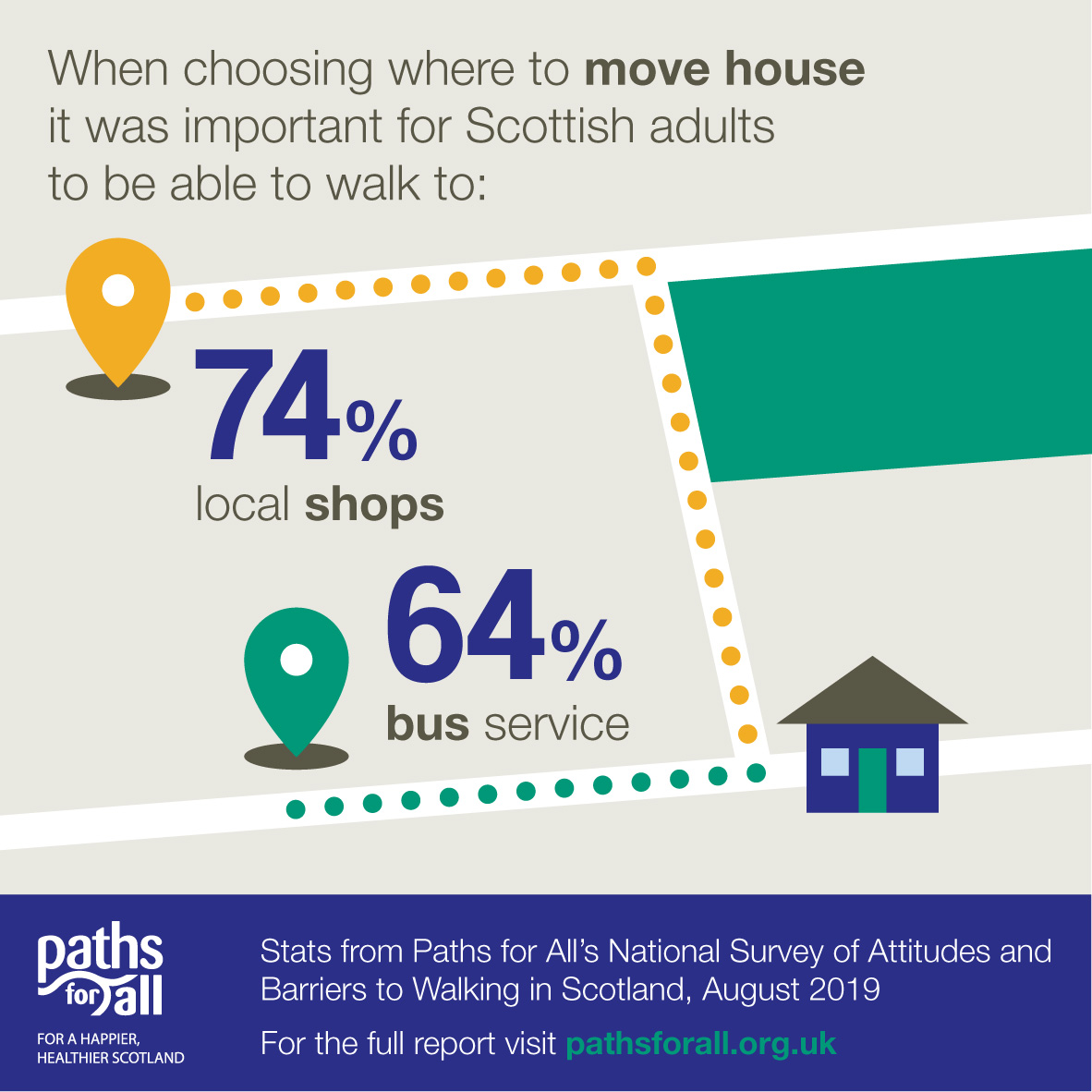Research carried out in our National survey of attitudes and barriers to walking in Scotland, found the top considerations for choosing somewhere to live were access to local facilities (74%) and a regular bus service (64%). However, an evaluation of major housing sites found limited steps to meet these needs in developments that put car use first.

Research on Sustainable Transport Choices in New Housing explored three major developments (1) where the Scottish Government’s Planning Policy should have ensured positive choices for residents in terms of walking, cycling, public transport and car clubs. On inspection, none of these developments were deemed easy to live in without at least one household car, whilst pedestrian design, public transport and local facilities were lacking. Design around car access and over provision of parking offered little sense of place or community.
The reliance on cars was exacerbated by the lack of controlled and uncontrolled pedestrian crossing places, missing pavement infrastructure and signage to local facilities. Often access roads only connected to the road network, not walking and cycling routes to local facilities. The level of local services within walking distance was also deemed inadequate. There has only been limited improvement when compared to similar research in 2018 (2).
Stuart Hay, Director of Living Streets Scotland said:
The level of car dependence inherent in their design means each development undermines national policy objectives to cut congestion, reduce air pollution and support active lifestyles. With climate and air pollution emergencies, we need to radically rethink how we meet Scotland’s growing housing needs.
“Each development will make these issues worse without radical redesign to support walking and public transport. “The good news is that there is clear public demand for a change in how we plan communities so new housing has better access to local services and public transport options. The challenge is ensuring that these aspects of design are not seen as optional extras by housing developers and local authority planners.”
Ian Findlay CBE, Paths for All Chief Officer said:
Living Streets Scotland’s report unfortunately highlights another example of the disconnect between our well-crafted policies and the reality of practice on the ground. It’s disappointing to see we are still designing communities that perpetuate the outdated car culture and all the disbenefits of such a culture, including pollution, congestion, sedentary lifestyles, and inequalities.
“Our recent Public Opinion Survey (3) found on average the time to walk to local services is longer than the time people are prepared to walk for. The majority of us would not be prepared to walk for more than 20 minutes to reach local services which include shops, schools, GP surgeries, greenspace, and public transport links.
“These findings, alongside this new review from Living Streets, creates an evidence base to challenge current norms and provide solutions for a smarter, healthier, more equitable, greener, more prosperous future."
Read the Sustainable Transport in New Housing Review here.
1. The Transport Scotland-funded research project assessed Winchburgh Village(a) in West Lothian, Hilton garden city (b) in Rosyth, Fife and Cammo Fields (c) in Edinburgh as major developments with planning approval after the publication of the Scottish Government’s Designing Streets guidance. Read more here.
2. Progress on Low Car Neighbourhoods in Scotland Report, March 2018
3. National survey of attitudes and barriers to walking in Scotland, August 2019


